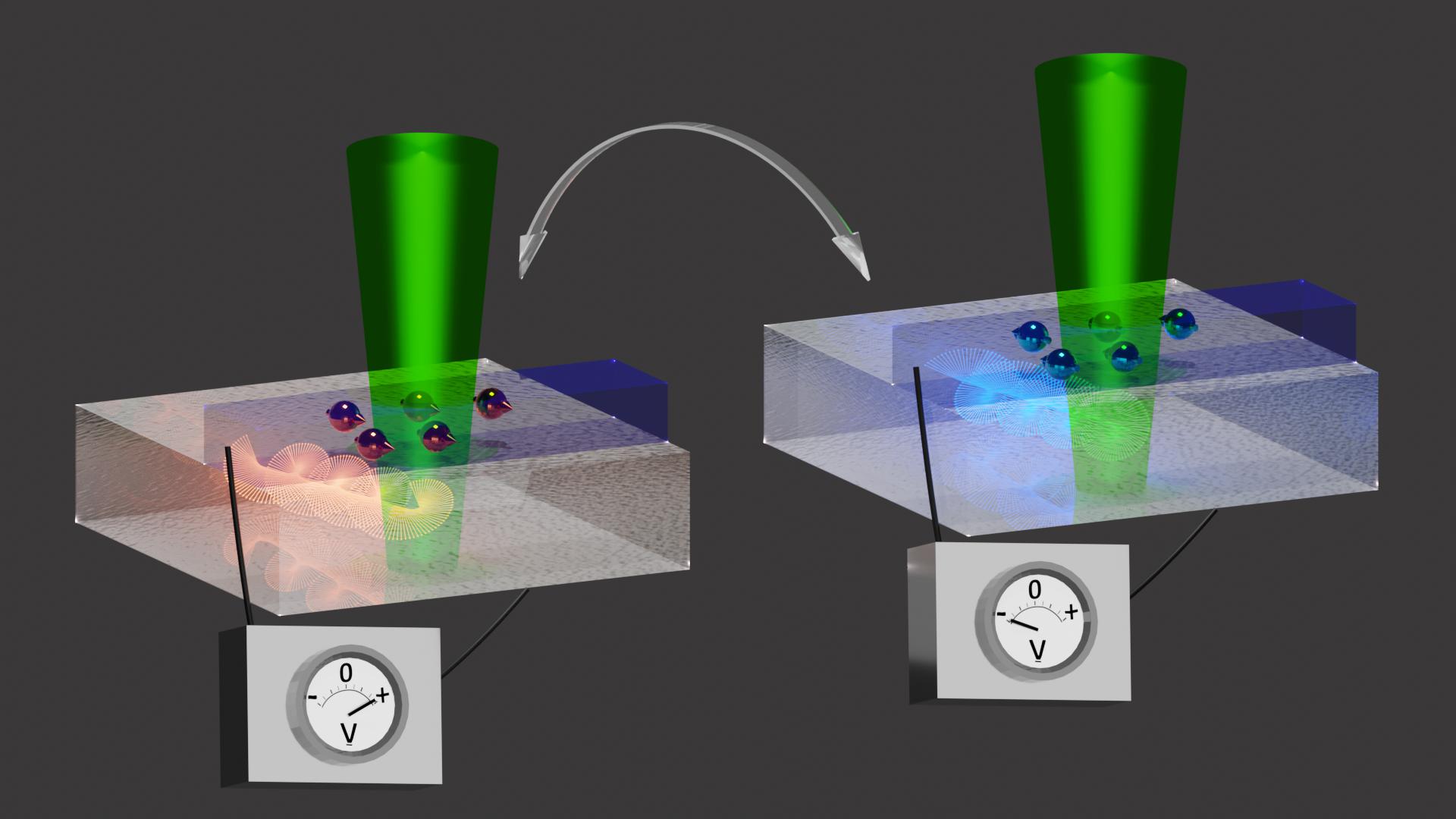Iron-rich hematite, commonly found in rocks and soil, turns out to have magnetic properties that make it a promising material for ultrafast next-generation computing.
In 2023, EPFL researchers succeeded in sending and storing data using charge-free magnetic waves called spin waves, rather than traditional electron flows. The team from the Lab of Nanoscale Magnetic Materials and Magnonics, led by Dirk Grundler, in the School of Engineering used radiofrequency signals to excite spin waves enough to reverse the magnetization state of tiny nanomagnets. When switched from 0 to 1, for example, this allows the nanomagnets to store digital information; a process used in computer memory, and more broadly in information and communication technologies.
This work was a big step toward sustainable computing, because encoding data via spin waves (whose quasiparticles are called magnons) could eliminate the energy loss, or Joule heating, associated with electron-based devices. But at the time, the spin wave signals could not be used to reset the magnetic bits to overwrite existing data.
Hematite exhibits entirely new spin physics that can be harvested for signal processing at ultrahigh frequencies, which is essential for the development of ultrafast spintronic devices and their applications in next-generation information and communication technology."
Now Grundler's lab, in collaboration with colleagues at Beihang University in China, has published research in Nature Physics that could make such repeated encoding possible. Specifically, they report unprecedented magnetic behavior in hematite: an iron oxide compound that is earth-abundant and much more environmentally friendly than materials currently used in spintronics.
Grundler explains: "This work demonstrates that hematite is not just a sustainable replacement for established materials like yttrium iron garnet. It exhibits entirely new spin physics that can be harvested for signal processing at ultrahigh frequencies, which is essential for the development of ultrafast spintronic devices, and their applications in next-generation information and communication technology."
Two magnon modes are better than one
The discovery came unexpectedly when EPFL alumnus Haiming Yu, now a professor at the Fert Beijing Institute in the MIIT Key Laboratory of Spintronics at Beihang University, detected some strange electrical signals coming from a nanostructured platinum stripe on hematite. The signals, measured by researcher Lutong Sheng of the same group, were unlike anything observed on conventional magnetic materials, so Yu's team sent their device to Grundler's lab for analysis.

While examining the magnon signals in the sample, Grundler spotted a 'wiggle' in their spatial distribution. "This sharp observation eventually led to the discovery of an interference pattern, which was the critical turning point of this research," Yu says. Indeed, using light scattering microscopy, EPFL PhD student Anna Duvakina determined that the strange electrical signals in the hematite sample were related to patterns of interference between two separate spin wave excitations called magnon modes.
Other magnetic materials like yttrium iron garnet only yield one magnon mode, but having two magnon modes is crucial: it means that spin currents generated from magnons could be made to switch back and forth between opposing polarizations on the same device, which could in turn switch the magnetization state of a nanomagnet in either direction. In theory, this could finally allow repeated encoding and storage of digital data. Next, the researchers hope to test this idea by mounting a nanomagnet onto the hematite device.
"Hematite has been known to man for thousands of years but its magnetism has been too weak for standard applications. Now, it turns out that it outperforms a material that was optimized for microwave electronics in the 1950s," Grundler says. "This is the beauty of science: you can take this old, earth-abundant material and find this very timely application for it, which could allow us to have a more efficient and sustainable approach to spintronics."






